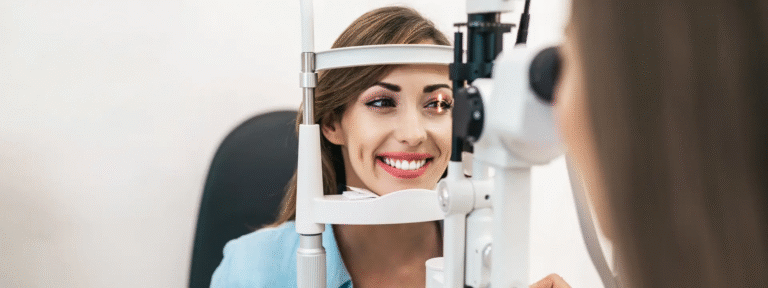Vaginal rejuvenation has become an increasingly popular option for women seeking to improve comfort, appearance, and sexual health. Despite its growing acceptance, many patients still have important questions about the safety of these procedures.
This comprehensive guide explores the safety profile of vaginal rejuvenation—both surgical and non-surgical—and what patients should understand before undergoing treatment. Knowledge empowers you to make informed decisions and ensure the best outcomes for your intimate health.
🔍 What Does Vaginal Rejuvenation Involve?
Vaginal rejuvenation refers to procedures designed to tighten, tone, and restore vaginal and vulvar tissues. Options range from minimally invasive energy-based treatments like lasers and radiofrequency to surgical procedures such as vaginoplasty and labiaplasty.
Each approach has its own risks, benefits, and recovery process, which influences overall safety.
🛡️ Safety of Non-Surgical Vaginal Rejuvenation
How Non-Surgical Treatments Work:
- Use laser, radiofrequency (RF), or ultrasound energy to stimulate collagen production.
- Encourage tissue regeneration, increased blood flow, and improved moisture.
- Procedures are done in-office, with minimal discomfort and no incisions.
Safety Profile:
- Generally very safe with low risk of complications.
- Side effects may include mild redness, swelling, or temporary discharge lasting a few days.
- No anesthesia needed, so risks associated with sedation are eliminated.
- Most patients return to normal activities immediately.
- Because these treatments are non-invasive, there is little to no risk of infection or scarring.
Important Considerations:
- Choose FDA-cleared devices and licensed practitioners trained in vaginal rejuvenation.
- Avoid treatment if pregnant, menstruating, or with active infections.
- Some conditions, such as pelvic organ prolapse or severe vaginal scarring, may require alternative care.
⚠️ Safety of Surgical Vaginal Rejuvenation
What Surgical Procedures Entail:
- Vaginoplasty, labiaplasty, perineoplasty, or monsplasty involve cutting, tightening, or reshaping tissues.
- Require local or general anesthesia.
- Usually performed by a board-certified gynecologic surgeon or plastic surgeon.
Risks and Complications:
- Infection, bleeding, and scarring are potential surgical risks.
- Temporary pain, swelling, bruising, and numbness are common during recovery.
- Rare risks include nerve damage or dissatisfaction with cosmetic results.
- Healing requires 4 to 6 weeks or more, during which certain activities, including sexual intercourse, are limited.
How to Mitigate Risks:
- Ensure surgery is performed in a sterile, accredited facility.
- Follow pre- and post-operative instructions carefully.
- Disclose full medical history and any medications to your surgeon.
- Attend all follow-up visits for optimal monitoring.
🔬 What Does the Research Say?
- Studies show high satisfaction rates (over 80%) with both surgical and non-surgical vaginal rejuvenation when performed by experienced providers.
- Complication rates are low, particularly with non-surgical laser or RF treatments.
- Surgical procedures carry higher risks but offer more permanent results.
- Long-term safety data is still evolving, especially for newer technologies, so maintenance treatments may be necessary.
🤝 Choosing a Qualified Provider
One of the most critical factors in ensuring safety is selecting a qualified, experienced practitioner who:
- Has board certification in gynecology, plastic surgery, or dermatology.
- Uses FDA-approved equipment or follows medically accepted protocols.
- Provides a thorough consultation and physical examination.
- Discusses risks, benefits, alternatives, and realistic expectations.
❓ What Patients Should Ask Before Treatment
- What is your experience with vaginal rejuvenation?
- Which technology or surgical technique do you use?
- What are the possible risks and side effects?
- What is the expected recovery time?
- How many sessions or follow-ups are needed?
- Can you provide before-and-after photos?
- Are there contraindications or reasons I shouldn’t have this procedure?
🩺 Post-Treatment Care and Monitoring
- Follow all post-procedure guidelines closely to reduce infection risk.
- Avoid sexual intercourse, tampon use, or swimming for the recommended period.
- Report any unusual symptoms immediately, such as heavy bleeding, severe pain, or fever.
- Attend scheduled follow-ups to assess healing and address concerns.
👩⚕️ Who Should Avoid Vaginal Rejuvenation?
- Pregnant or breastfeeding women
- Women with active genital infections or lesions
- Those with certain autoimmune disorders or impaired wound healing
- Patients with untreated pelvic organ prolapse or malignancies
- Individuals who cannot commit to follow-up care or post-op restrictions
🌟 Final Thoughts
Vaginal rejuvenation is generally safe when performed by skilled professionals using FDA-cleared technology or surgical best practices. Whether opting for non-surgical treatments or surgery, patient education, provider selection, and adherence to care instructions are paramount for a positive experience.
If you’re considering vaginal rejuvenation, schedule a consultation with a trusted specialist who can evaluate your individual health status and help tailor the safest, most effective treatment plan.




